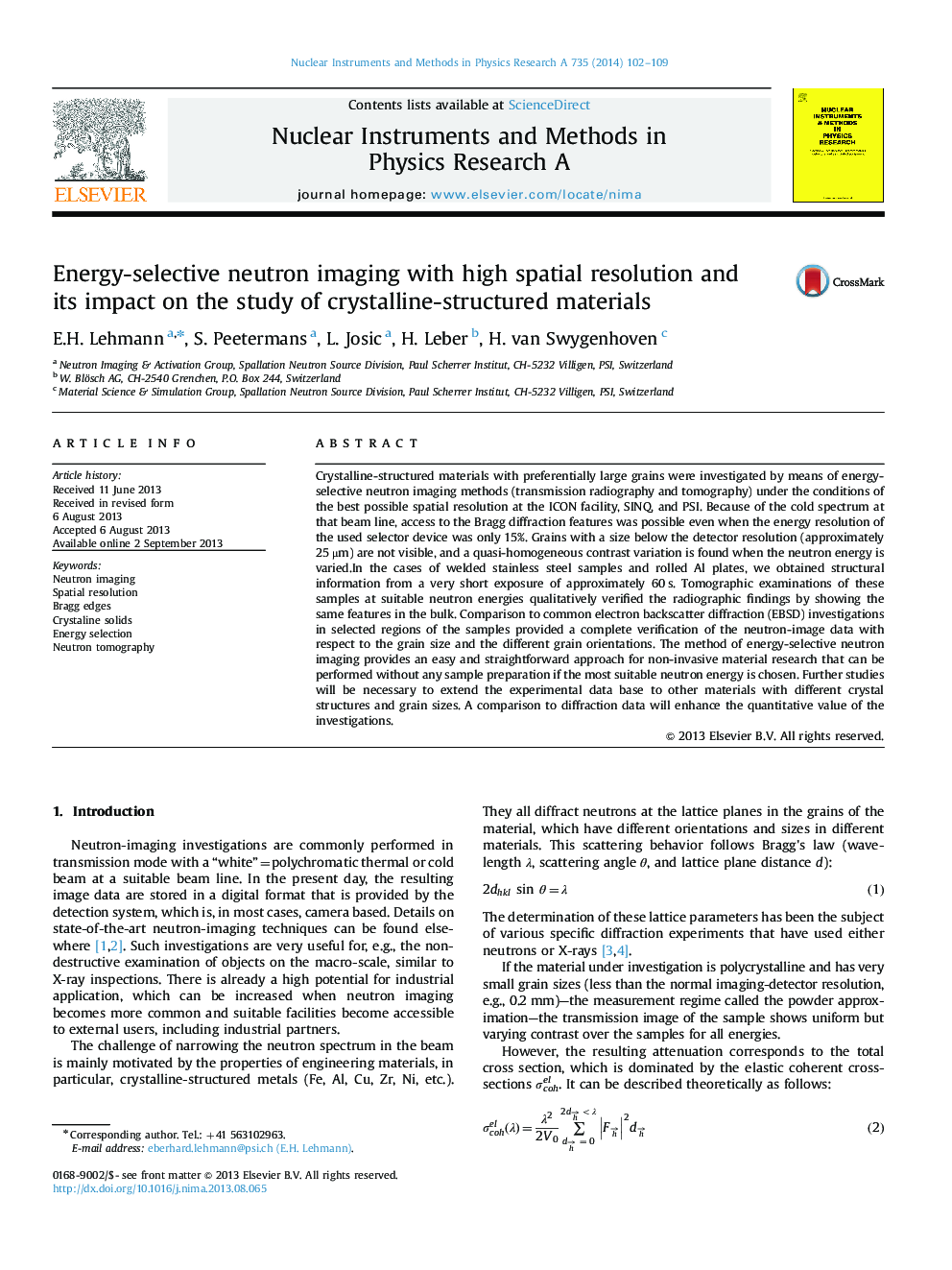| Article ID | Journal | Published Year | Pages | File Type |
|---|---|---|---|---|
| 8178347 | Nuclear Instruments and Methods in Physics Research Section A: Accelerators, Spectrometers, Detectors and Associated Equipment | 2014 | 8 Pages |
Abstract
Crystalline-structured materials with preferentially large grains were investigated by means of energy-selective neutron imaging methods (transmission radiography and tomography) under the conditions of the best possible spatial resolution at the ICON facility, SINQ, and PSI. Because of the cold spectrum at that beam line, access to the Bragg diffraction features was possible even when the energy resolution of the used selector device was only 15%. Grains with a size below the detector resolution (approximately 25 μm) are not visible, and a quasi-homogeneous contrast variation is found when the neutron energy is varied.In the cases of welded stainless steel samples and rolled Al plates, we obtained structural information from a very short exposure of approximately 60 s. Tomographic examinations of these samples at suitable neutron energies qualitatively verified the radiographic findings by showing the same features in the bulk. Comparison to common electron backscatter diffraction (EBSD) investigations in selected regions of the samples provided a complete verification of the neutron-image data with respect to the grain size and the different grain orientations. The method of energy-selective neutron imaging provides an easy and straightforward approach for non-invasive material research that can be performed without any sample preparation if the most suitable neutron energy is chosen. Further studies will be necessary to extend the experimental data base to other materials with different crystal structures and grain sizes. A comparison to diffraction data will enhance the quantitative value of the investigations.
Related Topics
Physical Sciences and Engineering
Physics and Astronomy
Instrumentation
Authors
E.H. Lehmann, S. Peetermans, L. Josic, H. Leber, H. van Swygenhoven,
